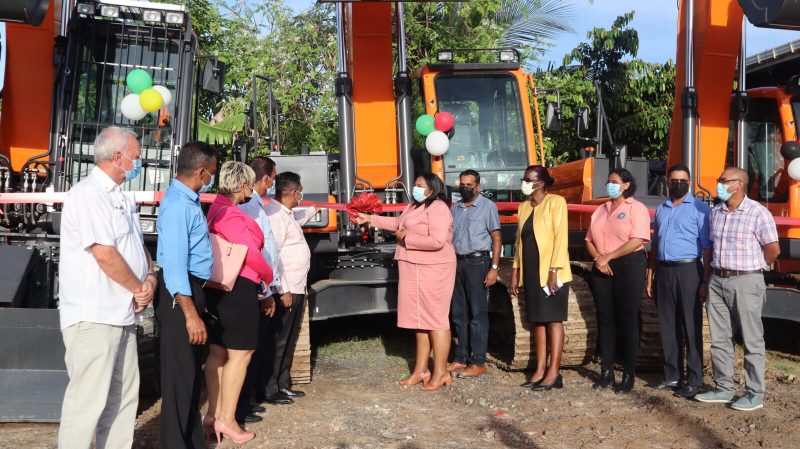– approximately $1.5B spent on emergency flood-relief efforts
At the end of 2021, an estimated $28.7 billion was expended by the various agencies under the umbrella of the Agriculture Ministry, further setting the path for continued development for a number of transformative projects within the sector.

Apart from the budgeted $22.6 billion, approximately $6.1 billion worth of supplementary funds were sought and approved to cover additional expenses, which include the execution of emergency works in flooded areas following the extended May-June rainy period.
The government was able to make a considerable amount of headway with restoring Guyana’s agriculture sector after a five-year hiatus of much-needed investment in the development and maintenance of new and existing drainage and irrigation structures which, in turn, crippled this very critical sector.
A mere two months after the passage of the national budget, torrential rains across the country forced the drainage authority to implement a series of emergency interventions seeking to bring relief to some 115 communities that suffered from what was considered the worst flood in Guyana in recent history.
Approximately $1.5 billion was spent to carry out emergency drainage works which included clearing and desilting clogged waterways, the operation of both mobile and fixed drainage pumps to drain flooded farming and residential areas, as well as rehabilitating and reinforcing embankment structures in Regions Two, Three, Four, Five, Six, and Ten.
Despite the challenges faced by the floods, NDIA was able to stay on course with its 2021 work programme.
In addition to the near $8.4 billion that was expended to execute drainage and irrigation work across the country, just over $4 billion was also spent to cover capital expenditure which included the procurement of heavy-duty machinery as well as the construction of drainage and irrigation structures.
A total of 2487 contracts were also signed in 2021 which included a $497,464,600 contract that was signed for the supply of a Cutter Head Dredge.
Farmers in the Pomeroon were also able to benefit from a block drainage programme which will continue in 2022. So far, approximately 200 farmers benefited from the programme in 2021.
In keeping with the government’s goal to double agriculture production, thus reducing its food import bill, NDIA’s work programme also focused on carrying out drainage works in communities that had a clear interest in farming. Some of these communities are historically known for their agricultural outputs but saw a decline in production due to the lack of proper drainage and irrigation systems under the APNU/AFC government.
Because of this, the drainage authority was able to successfully carry out critical D&I works to drainage structures in Nabacalis, Friendship, Victoria, Cove and John, Hogg Island, Wakenaam, Leguan, Zeelugt, Meten-Meer-Zorg, Buxton, Canal Polders, Black Bush Polders, among others after years of neglect.
Through collaborations with new and existing Community Development Councils (CDCs) Water Users’ Associations, NDIA also implemented routine drainage maintenance programmes whereby community stakeholders and beneficiaries were contracted to maintain the waterways in their communities.
New Lands
In 2021, the government also commenced work on the development of several farm-to-market roads in an effort to make more lands available to farmers. The ongoing construction of two major roads at Numbers 52 and 58 villages Corentyne, Berbice, as well as a $327 million asphaltic concrete road at Onverwagt in Region Five will give farmers access to approximately thousands of acres of prime farmlands for the cultivation of rice and cash crops as well as the cultivation of livestock.

Minister Mustapha said the roads were among several projects streamlined for implementation at strategic farming villages across Guyana.
“These are very significant and transformative projects. You will see thousands of acres of new lands being made available with the construction of these all-weather roads which will satisfy the needs of thousands of farmers there,” the minister noted.
The farm-to-market roadway at Number 52 Village will span approximately two kilometers long and will be completed at a cost of $240 million while the Number 58 Village road will cost just about $640 million to construct.
The Ministry is also advancing its plan to expand the sector over the next four years, which would see the construction of several farm-to-market roads across the regions. This includes a projected $175 million road on the right bank of the Mahaicony Creek in Region Five, an estimated $150 million road on the left bank of the Mahaica Creek in Region Four, and an estimated $100 million road at Salem, Region Three.








